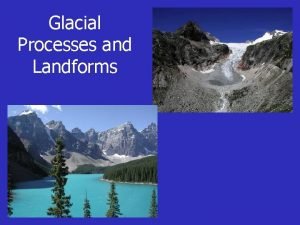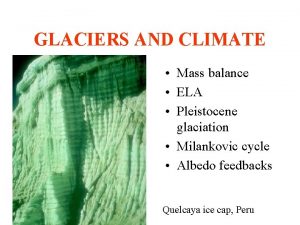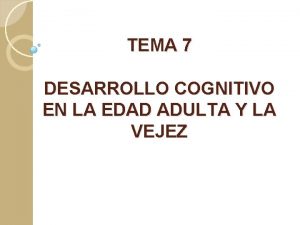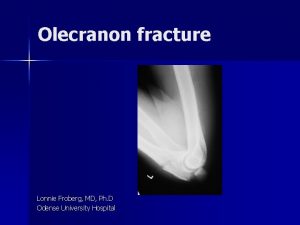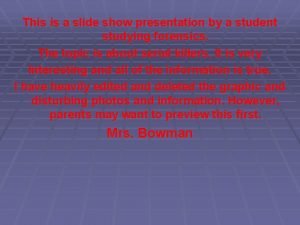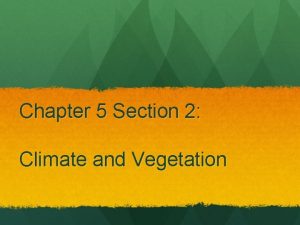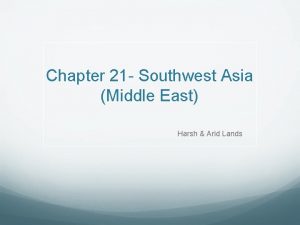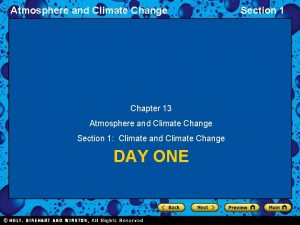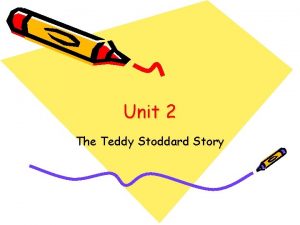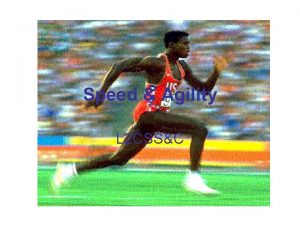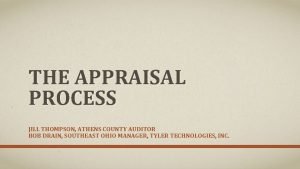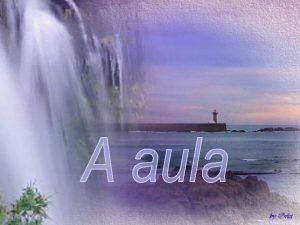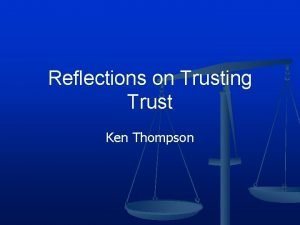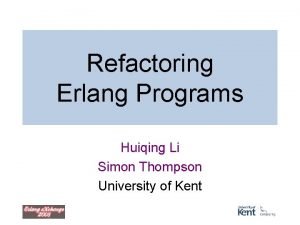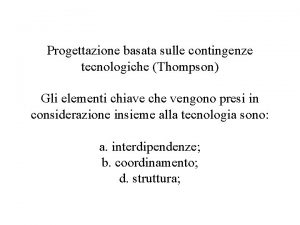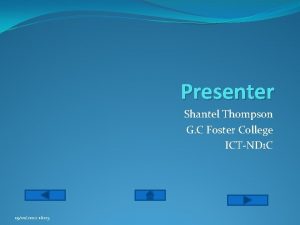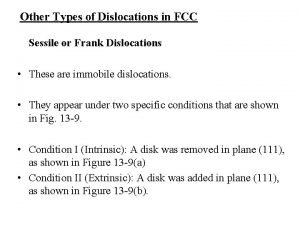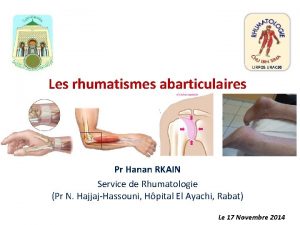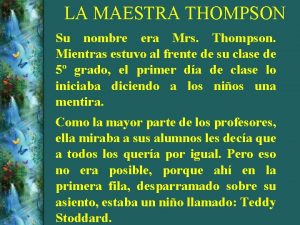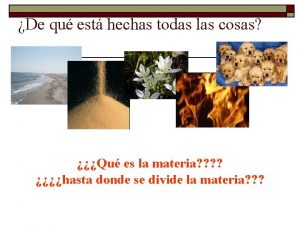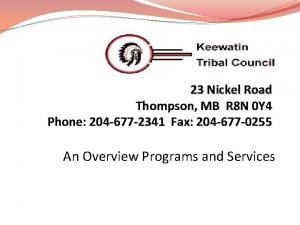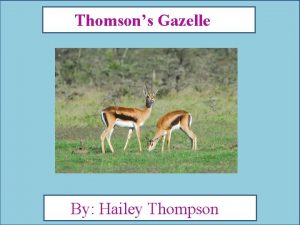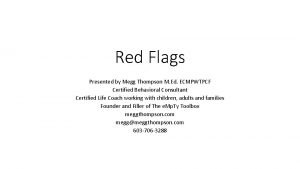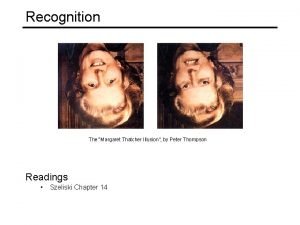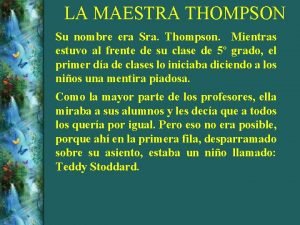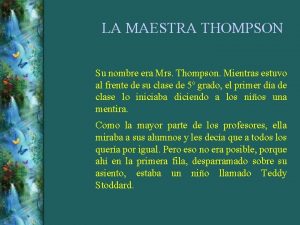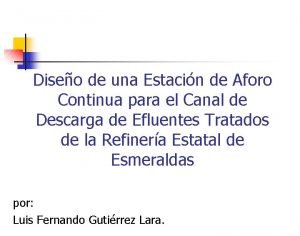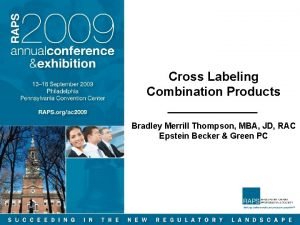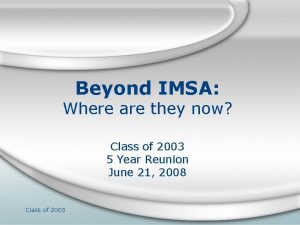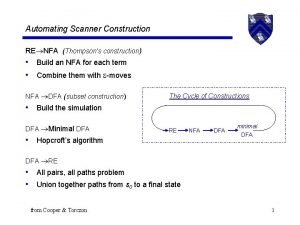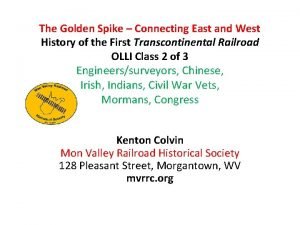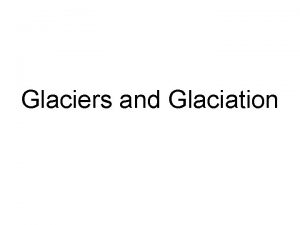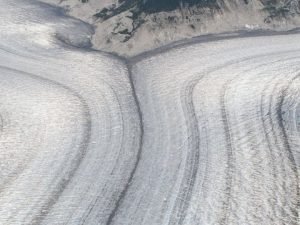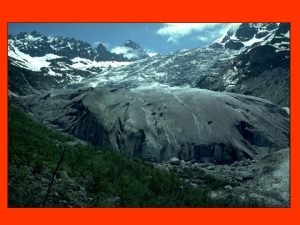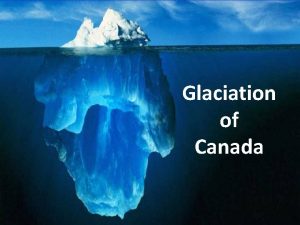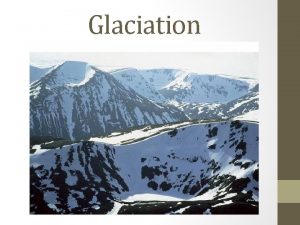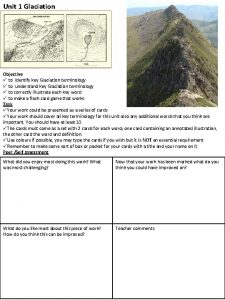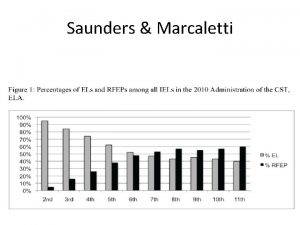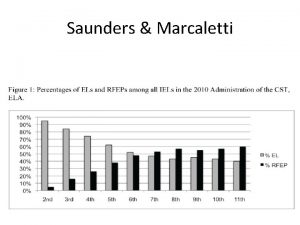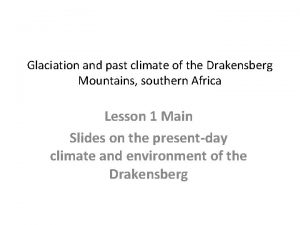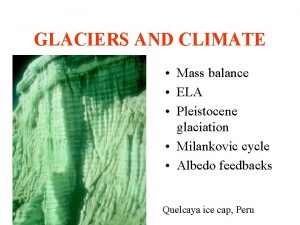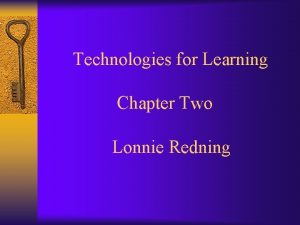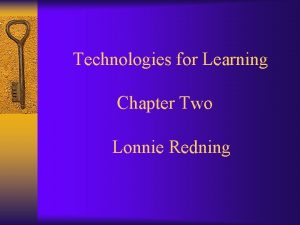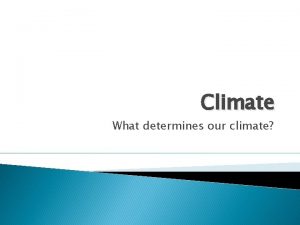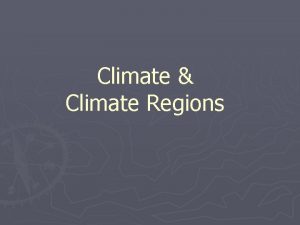Chapter 12 Climate and Glaciation Lonnie Thompson trekks
























































- Slides: 56

Chapter 12: Climate and Glaciation • Lonnie Thompson trekks to Himalaya, the Andes, and beyond to study ice. Essential Earth 1 e © 2008 by W. H. Freeman and Company • Jordan, Do The you know why ? What is he studying ?

Chapter 10: Climate and Glaciation • No scientist has taken bigger risks above 18000 ft, risking blood clots, temporary blindness, frostbite, and hurricaneforce winds. • Risks to gather measurements and help us understand current climate trends. • Lonnie Thompson reconstructed a meticulous calendar of temperatures and dates from isotope measurements in ice. • He found that the Earth's frozen ice stores a history of climate changes as far back as 750, 000 yrs. Jordan, The Essential Earth 1 e © 2008 by W. H. Freeman and Company

The Earth's Climate Jordan, The Essential Earth 1 e © 2008 by W. H. Freeman and Company

The Earth's Climate • The climate includes many components of the Earth's system and interactions between them. Jordan, The Essential Earth 1 e © 2008 by W. H. Freeman and Company

The Earth's Climate • The atmosphere is layered with different temperature values in each • Temperatures in other Earth systems such as ocean water, Jordan, The Essential Earth 1 e © 2008 by W. H. Freeman and Company biosphere, lithosphere, & crysophere all contribute to an average

Glaciers • The cryosphere comprises all of the ice on the Earth. Jordan, The Essential Earth 1 e © 2008 by W. H. Freeman and Company

Glaciers • Most of the Earth's ice is found in Antarctic continental glacier. • Where are some other continental glaciers ? Jordan, The Essential Earth 1 e © 2008 by W. H. Freeman and Company

Glaciers • Greenland is the second largest glacier on Earth and with Antarctica cover 10% of the Earth's land mass. • These glaciers store 75% of the world's fresh water. • While Greenland has 2. 6 mill cubic km of ice, it is dwarfed by Antarctica which has 30 mill cubic km (90%) of the Earth's cryosphere. • Antarctica's ice is ~4000 m thick! Jordan, The Essential Earth 1 e © 2008 by W. H. Freeman and Company

Glaciers • Snow melt is the source of much of the fresh water in the hydrosphere. • Snowfall is 60 -70% of all annual precipitation which melts in spring into rivers and streams. Jordan, The Essential Earth 1 e © 2008 by W. H. Freeman and Company

Glaciers • The cryosphere includes sea ice which grows in volume in the winter and shrinks in the summer. • This satellite picture (left) shows sea ice flowing through the Bering Strait in May 2002. Jordan, The Essential Earth 1 e © 2008 by W. H. Freeman and Company

Heat flowing out of Earth’s deep interior is only 0. 06 W/m 2. Solar energy input to Earth’s surface is 342 W/m 2. Jordan, The Essential Earth 1 e © 2008 by W. H. Freeman and Company Therefore, heat radiating from Earth must balance solar input.

Heat and Radiation from the Sun • The Earth reflects radiation not absorbed by the atmosphere & surface • Strong greenhouse gases reflect this radiation back to the Earth and prevent it from leaving the atmosphere. Jordan, The Essential Earth 1 e © 2008 by W. H. Freeman and Company

The Balance of Heat Flow into/out of the Earth • Water vapor gives positive feedback, that is, it is a greenhouse gas and its presence prevents escape of the Earth's excess radiation. • Albedo gives positive feedback. Albedo measures the Sun's reflected energy from the cryosphere. As the Earths' temp rises, and glaciers melt, the albedo decreases. This process reduces reflected radiation escape. • Radiation damping can give negative feedback. Infrared energy escape is increased if temperatures rise. This process slows large temperature fluxuations and keeps the oceans from freezing or boiling off. • Plant growth gives negative feedback. Conversion of CO 2 into organic matter reduces greenhouse gasses in the atmosphere and allows for more escape of radiative energy. Jordan, The Essential Earth 1 e © 2008 by W. H. Freeman and Company

What Would our Planet be like Without Greenhouse Gases ? • The Earth rotates (1 day) much faster than the Moon (30 days) which evens out its temperature • The Moon's temp changes from 130 C in the day to -170 C at night! This would be very uncomfortable! • The Earth's glaciers increases its albedo to 31% where the Moon's albedo is only 7%. • However without any greenhouse gases, the Earth's surface temp would be very cold, -19 C (-2 F) and would freeze all our oceans. • Some greenhouse gases are necessary to moderate strong Jordan, The Essential Earth 1 e © 2008 by W. H. Freeman and Company fluctuations in surface temperature from Solar radiation

Local Climate Variations Jordan, The Essential Earth 1 e © 2008 by W. H. Freeman and Company

Antarctic Ice Sheet • Today many scientists work to study ice cores in Anarctica Jordan, The Essential Earth 1 e © 2008 by W. H. Freeman and Company

• Russian scientists at Vostok station carefully remove an ice core at 3500 m altitude (T is about -55 C !) • Below inspection of the core is done in a cold lab. Jordan, The Essential Earth 1 e © 2008 by W. H. Freeman and Company

Past Glaciation from Ice Cores Jordan, The Essential Earth 1 e © 2008 by W. H. Freeman and Company

Climate has been relatively warm and stable during the last 10, 000 years. High Key: Temperature CO 2 Methane Thousands of years before present Jordan, The Essential Earth 1 e © 2008 by W. H. Freeman and Company Relative carbon dioxide and methane concentrations Temperature relative to present climate (°C) There is a decline in both temperature and greenhouse gas concentrations during glacial periods… …and a rapid rise during deglaciation. Low

Glacial and Temperature Cycles • White shows evidence indicating the extent of the Wisconsin glacier in the Great Lakes during it's maximum about 18000 yrs ago and was ~3 km thick. Jordan, The Essential Earth 1 e © 2008 by W. H. Freeman and Company

Human activities release a total of 7. 1 Gt of carbon into the atmosphere each year. New plant growth and air-sea gas exchange remove 3. 8 Gt/yr, … ATMOSPHERE Fossilfuel burning (5. 3 Gt/yr) Land-use change: deforestation, agriculture (1. 7 Gt/yr) Land uptake By new plant growth (1. 9 Gt/yr) Terrestrial biosphere LAND Cement production (0. 1 Gt/yr) Fossil Rock organic carbonates carbon GEOLOGIC RESERVOIRS Jordan, The Essential Earth 1 e © 2008 by W. H. Freeman and Company Ocean uptake by air-sea gas exchange (1. 9 Gt/yr) OCEAN …yielding a net atmospheric increase of 3. 3 Gt/yr.

Temperature CO 2 concentration Years Jordan, The Essential Earth 1 e © 2008 by W. H. Freeman and Company CO 2 concentration (ppm) Global temperature anomaly (°C) A recent warming trend correlates with the increase in CO 2.

CO 2 concentration (ppm) Northern Hemisphere temperature anomaly (°C) The 20 th-century is clearly anomalous when compared with the last millennium. Temperature CO 2 concentration Years Jordan, The Essential Earth 1 e © 2008 by W. H. Freeman and Company

Arctic sea ice 1995 -2007 Jordan, The Essential Earth 1 e © 2008 by W. H. Freeman and Company (National Snow and Ice Data Center, Boulder)

Arctic sea ice 2005 -2007 4. 3 millionsq sqkm km Jordan, The Essential Earth 1 e © 2008 by W. H. Freeman and Company (National Snow and Ice Data Center, Boulder)

Receding Glacier South Cascade Glacier, Washingto Jordan, The Essential Earth 1 e © 2008 by W. H. Freeman and Company

Meteorites found in Arctic Glaciers • The easiest place to locate dark, rocky meteorites is in Antarctic Ice Sheet • A small number of meteorites appear to have come from the Moon and Mars • Several of these appear to have come from Mars martian meteorite lunar meteorite Jordan, The Essential Earth 1 e © 2008 by W. H. Freeman and Company

Global Warming • Global warming is a physical measurement that the Earth's surface temperatures are rising beyond normal fluctuations. • Global warming can have many effects on our environment: - increase atmospheric temperature - melt glacial ice - prevent escape of the Sun's excess radiation - harm habitat environments like polar bears - create drastic changes in our climate (extreme hot and cold seasons) - and remove our only evidence of past climate history ! What can we do about this at home ? Jordan, The Essential Earth 1 e © 2008 by W. H. Freeman and Company

The Global Energy Challenge Roel Snieder Jordan, The Essential Earth 1 e © 2008 by W. H. Freeman and Company Photo: USFWS/Susanne Miller

Developing countries Jordan, The Essential Earth 1 e © 2008 by W. H. Freeman and Company

… and our energy use Jordan, The Essential Earth 1 e © 2008 by W. H. Freeman and Company

How do Geologist Find Old Glaciers Boundaries ? Glaciers leave clues. . . Jordan, The Essential Earth 1 e © 2008 by W. H. Freeman and Company

• Glacial striations on a rock from stones grinding at the base of a heavy ice sheet leave these shiny linear marks on the bedrock below. Jordan, The Essential Earth 1 e © 2008 by W. H. Freeman and Company

Glacial Characteristics • Glaciers flow downhill as a solid mass that creates channels, and walls made of ground up rock debris known as a merraine. Jordan, The Essential Earth 1 e © 2008 by W. H. Freeman and Company

Erosional Landscapes • Erosional landforms produced by valley glaciers include: – U-shaped valleys – Hanging valleys • Smaller tributary glacial valleys left stranded above more quickly eroded central valleys Jordan, The Essential Earth 1 e © 2008 by W. H. Freeman and Company

Erosional Landscapes U-shaped valleys Hanging valleys Jordan, The Essential Earth 1 e © 2008 by W. H. Freeman and Company

Glacial Deposits • Sediment-laden streams emerging from ends of glaciers have braided channel drainage patterns • Outwash landforms include drumlins, eskers, kettles and kames • Drumlins give can tell us what direction a glacier moved. Jordan, The Essential Earth 1 e © 2008 by W. H. Freeman and Company

Jordan, The Essential Earth 1 e © 2008 by W. H. Freeman and Company

The History of Energy Consumption in the US over past 150 yrs How much oil is available in the world for our use ? Is it infinite ? Jordan, The Essential Earth 1 e © 2008 by W. H. Freeman and Company

Peak oil N. B. based on USGS estimates, these are among the most optimistic (Energy Information administration) Jordan, The Essential Earth 1 e © 2008 by W. H. Freeman and Company

Declining production (1) resource depleted Jordan, The Essential Earth 1 e © 2008 by W. H. Freeman and Company

Declining production (2) production gap! Jordan, The Essential Earth 1 e © 2008 by W. H. Freeman and Company

Oil Peak, Oil Panic ? (Study by Amos Nur - Stanford) U. S. , Canada, Japan, Germany, France, Italy, UK, are the bigges consumers of© 2008 oilbyreserves worldwide. Jordan, The Essential Earth 1 e W. H. Freeman and Company

Oil Consumption World wide by country The US uses more oil than all other countries combined Jordan, The Essential Earth 1 e © 2008 by W. H. Freeman and Company

Jordan, The Essential Earth 1 e © 2008 by W. H. Freeman and Company

Countries with highest per capita income seeking oil from countri Jordan, The Essential Earthoil 1 e © 2008 by W. H. Freeman and Company (Saudi Arabia, Iraq, Venezuala). holding the wells/reservoirs

New find in Gulf of Mexico (Jack No. 2 test well) • up to 3 -15 billion barrels of oil • US consumption 20 million barrels/day • 5 months - 2 years • reservoir is 8 km under sea level Jordan, The Essential Earth 1 e © 2008 by W. H. Freeman and Company

Non-convenional reserves (excluding gas and coal) Jordan, The Essential Earth 1 e © 2008 by W. H. Freeman and Company (Courtesy of Joe Stefani)

Non-conventional oil 2 tons of tar sands produce 1 barrel of bitumen (~asphalt) Tar Sand Heavy Oil from National Geographic, June 2004 Jordan, The Essential Earth 1 e © 2008 by W. H. Freeman and Company Oil shale

Other Energy Resources • The metal uranium is used to power nuclear power generators – Found with organic matter in sedimentary rocks – Accounts for 10% of U. S. energy production – Leaves radioactive waste as by-product • Hydroelectric power provides about 4% of U. S. energy needs – Renewable and non-polluting • Geothermal power provides about 0. 2% of U. S. energy needs • Other renewable, non-polluting energy sources are wave/current power, solar power, wind power, and hydrogen fuel cells – As fossil fuel supplies dwindle, these sources become more important Jordan, The Essential Earth 1 e © 2008 by W. H. Freeman and Company

Other Energy Resources • The metal uranium is used to power nuclear power generators – Found with organic matter in sedimentary rocks – Accounts for 10% of U. S. energy production – Leaves radioactive waste as by-product • Hydroelectric power provides about 4% of U. S. energy needs – Renewable and non-polluting • Geothermal power provides about 0. 2% of U. S. energy needs • Other renewable, non-polluting energy sources are wave/current power, solar power, wind power, and hydrogen fuel cells – As fossil fuel supplies dwindle, these sources become more important Jordan, The Essential Earth 1 e © 2008 by W. H. Freeman and Company

First solar 2 MW array Ft. Carson, CO Jordan, The Essential Earth 1 e © 2008 by W. H. Freeman and Company

Research: efficient solar cells Jordan, The Essential Earth 1 e © 2008 by W. H. Freeman and Company http: //gcep. stanford. edu/research/solar. html

Alternative Energy Sources: Wind power Jordan, The Essential Earth 1 e © 2008 by W. H. Freeman and Company

What can I do as consumer? Lighting Transportation Jordan, The Essential Earth 1 e © 2008 by W. H. Freeman and Company Appliances

What can I do as citizen? • Ask: what is our energy plan? • Start a discussion in your community. • Demand that the United States becomes a world -leader in responsible use of energy. z Jordan, The Essential Earth 1 e © 2008 by W. H. Freeman and Company “That which we are, we shall teach, not voluntarily but involuntarily. ” [Emerson]
 Physical geography of northern europe
Physical geography of northern europe Glacial processes
Glacial processes Pleistocene glaciation
Pleistocene glaciation Desarrollo cognitivo en la edad adulta
Desarrollo cognitivo en la edad adulta Carey stainer
Carey stainer Troclear notch
Troclear notch Lonnie c bell
Lonnie c bell Lonnie trumbull
Lonnie trumbull Susan elaine rancourt
Susan elaine rancourt Climate change 2014 mitigation of climate change
Climate change 2014 mitigation of climate change Chapter 5 section 2 climate and vegetation answer key
Chapter 5 section 2 climate and vegetation answer key Why is the middle east so dry
Why is the middle east so dry Atmosphere
Atmosphere Chapter 13 atmosphere and climate change
Chapter 13 atmosphere and climate change World geography chapter 3 weather and climate
World geography chapter 3 weather and climate Teddy stoddard story
Teddy stoddard story Speed and agility frequency
Speed and agility frequency Chapter 24 patterns of climate answer key
Chapter 24 patterns of climate answer key Broadening the pie
Broadening the pie French thompson bnsf
French thompson bnsf Appraisal
Appraisal Ankle special tests athletic training
Ankle special tests athletic training Leticia thompson
Leticia thompson Thompson rural market index
Thompson rural market index Senhora thompson
Senhora thompson Ken thompson trusting trust
Ken thompson trusting trust Simon thompson kent
Simon thompson kent Interdipendenze generiche
Interdipendenze generiche Shantel thompson
Shantel thompson Terri tassie
Terri tassie Thompson tetrahedron
Thompson tetrahedron Kevin thompson nsf
Kevin thompson nsf Myron b thompson academy
Myron b thompson academy Budin de pasas thompson
Budin de pasas thompson Signe de thompson
Signe de thompson La maestra thompson
La maestra thompson Kenneth lane thompson
Kenneth lane thompson Florence thompson migrant mother interview
Florence thompson migrant mother interview Warren thompson demographer
Warren thompson demographer Modelo atomico de thomson
Modelo atomico de thomson Alena office belly
Alena office belly Escala thompson encefalopatia
Escala thompson encefalopatia Ktc referral winnipeg
Ktc referral winnipeg Gazelle life cycle
Gazelle life cycle Mark thompson stfc
Mark thompson stfc Megg thompson
Megg thompson Margaret thatcher illusion
Margaret thatcher illusion Wayne thompson sas
Wayne thompson sas Características de la profesora thompson para otros
Características de la profesora thompson para otros La maestra thompson
La maestra thompson Dr martha thompson
Dr martha thompson Estructuras de aforo
Estructuras de aforo Bradley merrill thompson
Bradley merrill thompson Dionte thompson
Dionte thompson Thompson's construction
Thompson's construction William thompson scalp
William thompson scalp Leticia thompson
Leticia thompson

